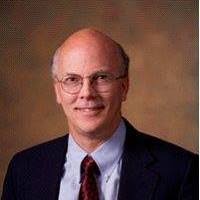Americans view public schools in the same way they view members of Congress - they tend to love theirs and hate everyone else's
 Pete Bylsma, a lifelong educator who’s worked with organizations such as the Gates Foundation and the Superintendent for the State of Washington to define what makes a “good” public school says this of the difficulty of providing a quality education: “Education isn’t rocket science - it’s actually a lot harder.” - the root of his statement coming from the fact that the laws of physics governing rocket science never change, whereas every school and classroom is different.
Pete Bylsma, a lifelong educator who’s worked with organizations such as the Gates Foundation and the Superintendent for the State of Washington to define what makes a “good” public school says this of the difficulty of providing a quality education: “Education isn’t rocket science - it’s actually a lot harder.” - the root of his statement coming from the fact that the laws of physics governing rocket science never change, whereas every school and classroom is different.
In a report he co-authored in 2007, Nine Characteristics of High Performing Schools , Bylsma and his colleague studied 25 schools in Washington State that were outperforming their peers to find out what, exactly, a good public school looks like. While the study picked from a wide variety of communities - urban, rural, high income, and low income - their similarities provide a template all schools can use to improve the quality of education nationwide, and a guide as to where districts should allocate funding.
You can find my full interview with Bylsma in the latest episode of You Don’t Have to Yell, via the recording below, on Apple Podcasts, or Spotify).
The characteristics Bylsma defined can be broken down into three buckets:
- High level objectives - Having a clear and shared focus, high standards and expectations.
- Processes - Collaboration and communication, alignment with state standards, and monitoring of learning and teaching.
- Supports - Focused professional development, a supportive learning environment, and family and community involvement.
The most surprising thing about this report is what should be the least surprising thing - that the people in the building in charge of educating the students and the level of collaboration between the school and those outside - the families and the community they live in - make the biggest contribution to student success.
Getting back to Bylsma’s comparison with rocket science, each school is different and each class within each school is different, so students do best when the bar is set high and the people instructing them are given the professional development and support they need to teach to where they are.
One of the ways in which teaching is harder than rocket science is that rocket scientists don’t have a peanut gallery of voters, politicians, and (sometimes dubious) outside interests chiming in on how they should do their job. Many of the reforms commonly called for in education - such as technology and smaller class sizes - have a minimal effect on the quality of education, and yet have an outsized presence in the conversation around improving the system.
What Bylsma’s report boils down to is this - students do better when given access to better quality teaching, and teachers do better when the focus is on helping them get better at their jobs rather than telling them how to do it. This part isn’t rocket science, it’s actually a lot easier.